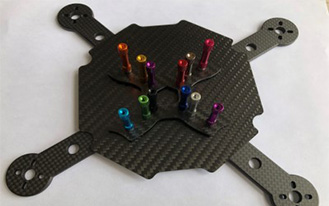Why Is the Interlaminar Shear Strength of Carbon Fiber Panels Higher Than Metals
Pulished on Jun. 14, 2025
Why Is the Interlaminar Shear Strength of Carbon Fiber Panels Higher Than Metals? A Layup Perspective What Is Interlaminar Shear Strength?
Interlaminar Shear Strength (ILSS) measures the resistance of a composite material's layers to sliding or delamination under shear load. In carbon fiber composites, while the fibers provide high strength, it's the resin system and fiber interface that play the main role in resisting layer separation.
0°/90° Cross-Ply Layup vs Unidirectional Layup


0/90 degree 0 degree
The layup method significantly affects the overall performance of composite materials.
✅ Unidirectional Layup: All fibers run in the same direction (e.g., 0°). These panels offer extremely high tensile strength in the fiber direction, but relatively low ILSS. This is because the interface between layers is mostly held together by resin, lacking fiber interlocking.
✅ Cross-Ply Layup (e.g., 0°/90°): Alternating layers in 0° and 90° orientations form a more interlocked structure, greatly enhancing resistance to interlayer slippage. The angle difference between fiber layers provides additional bonding, distributing shear forces across multiple directions.
Test Comparison (Approximate):
- Unidirectional ILSS: 30–40 MPa
- 0°/90° Cross-Ply ILSS: 60–75 MPa
Effect of Resin Systems on ILSS
While fibers determine directional strength, the resin system sets the upper limit of ILSS. Here's a comparison of two common resins:


 Previous:
None
Previous:
None 
